With a huge 6.7-inch Super Retina XDR OLED display and three rear cameras, the Apple iPhone 12 Pro Max is the biggest, heaviest, and most expensive iPhone to date. As for audio, the device’s two speakers are backed up by Dolby Atmos algorithms to deliver stereo and immersive playback. The latest top-of-the-range iPhone is also equipped with two microphones for background noise reduction, and features audio zoom.
We put the iPhone 12 Pro Max through our rigorous DXOMARK Audio test suite to measure its performance both at recording sound using its built-in microphones, and at playing audio back through its speakers. In this review, we will break down how it fared in a variety of tests and several common use cases.
Audio specifications include:
- Two front-facing speakers
- Microphones with noise cancellation
- Dolby Atmos surround sound
- Audio zoom
- No headphone jack
About DXOMARK Audio tests: For scoring and analysis in our smartphone audio reviews, DXOMARK engineers perform a variety of objective tests and undertake more than 20 hours of perceptual evaluation under controlled lab conditions. This article highlights the most important results of our testing. Note that we evaluate both Playback and Recording using only the device’s built-in hardware and default apps. (For more details about our Playback protocol, click here; for more details about our Recording protocol, click here.)
Test summary
Scoring
Sub-scores and attributes included in the calculations of the global score.
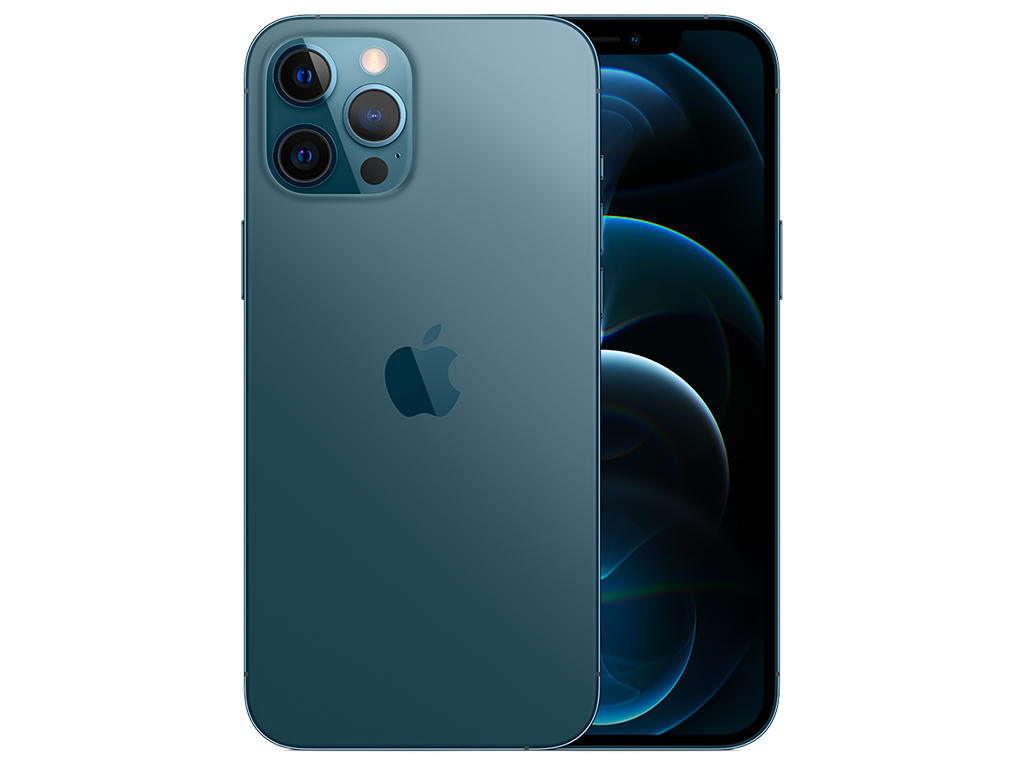
Apple iPhone 12 Pro Max


The iPhone 12 Pro Max surpasses its predecessor, the iPhone 11 Pro Max, and achieves the same overall DXOMARK Audio score of 74 as the iPhone XS Max. This places it among the best smartphones for audio performance we have measured to date, only two points lower than the class-leading Xiaomi Mi 10 Pro. However, its performance is more consistent than that of the iPhone XS Max: while its 2019 sibling performed better in playback than in recording, the iPhone 12 Pro Max has more uniform behavior, with almost equally good results in both categories.
Thanks to speakers that are hard to occlude, a great timbre performance (precise high-end and deep low-end extension, and consistent tonal balance regardless of the listening volume), impactful dynamics even at soft volumes, and good spatial attributes, the iPhone 12 Pro Max is an excellent gaming companion, and also performs very honorably when watching movies and playing music.
However, as with all iPhone iterations, note that the left and right channels are inverted in landscape mode, when using the Apple Music App. Further, occasional bass resonances appear at nominal and maximum volumes, which can impair bass precision.
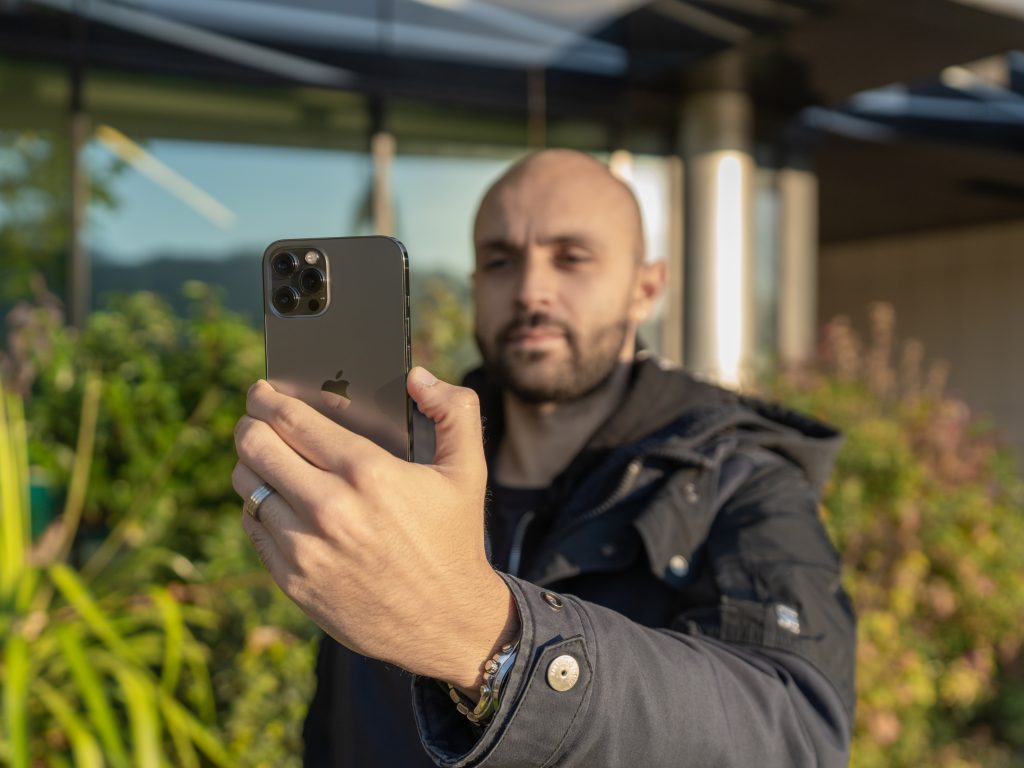
The iPhone 12 Pro Max fares particularly well when recording in loud environments, thanks to an exceptional maximum reachable level without noticeable distortion, and a solid timbre performance in high SPL scenarios. Selfie videos also do well, exhibiting above-average wideness, realistic distance rendering, and precise localizability of the sound sources. However, on shouting voices, aggressive pumping and slight distortion are perceivable in both selfie and life videos. The latter also suffers from a high-pitched noise, which affects localizability, and from excessive brightness, which impairs the signal-to-noise ratio.
Across all use cases, the sound envelope is well preserved, low-end dynamics are impactful, and tonal balance is well tuned, with good bass definition and natural voices.
Sub-scores explained
The DXOMARK Audio overall score of 74 for the iPhone 12 Pro Max is derived from its Playback and Recording scores and their respective sub-scores. In this section, we’ll take a closer look at these audio quality sub-scores and explain what they mean for the user.
Playback

Timbre
Apple iPhone 12 Pro Max
72
89
Timbre tests measure how well a phone reproduces sound across the audible tonal range and takes into account bass, midrange, treble, tonal balance, and volume dependency.
The iPhone 12 Pro Max’s playback timbre performance is quite similar to the iPhone 12’s, with precise high-ends, natural midrange reproduction, and a highly consistent tonal balance across all use cases, from softest to loudest volumes.
While low-end extension goes a bit deeper than that of the iPhone 12, as shown in the graph above, it still can’t seem to get rid of the occasional bass resonance.
Overall, the speakers are particularly performant in landscape mode, even more so when watching movies.

Dynamics
Apple iPhone 12 Pro Max
74
81
DXOMark’s dynamics tests measure how well a device reproduces the energy level of a sound source, and how precisely it reproduces bass frequencies.
The iPhone 12 Pro Max is only one point from the top-ranking phone in the dynamics sub-category, the Huawei Mate 20 X, and has a sightly better performance than the iPhone 12.

The 12 Pro Max delivers good attack at soft and nominal volumes, as well as good punch, even at soft volumes. Bass precision is very good overall, albeit impaired by the aforementioned resonances at both nominal and maximum volumes. In this area, too, changes in volume have little impact over the consistency of the performance.

Spatial
Apple iPhone 12 Pro Max
69
88
Sub-attributes for perceptual spatial tests include localizability, balance, distance, and wideness.

The iPhone 12 Pro Max does a fairly good job at reproducing spatial audio attributes. Distance rendering is realistic, and treble clarity ensures very precise localization of the sound sources throughout the sound field, which itself is particularly wide thanks to the device’s size, among other things.
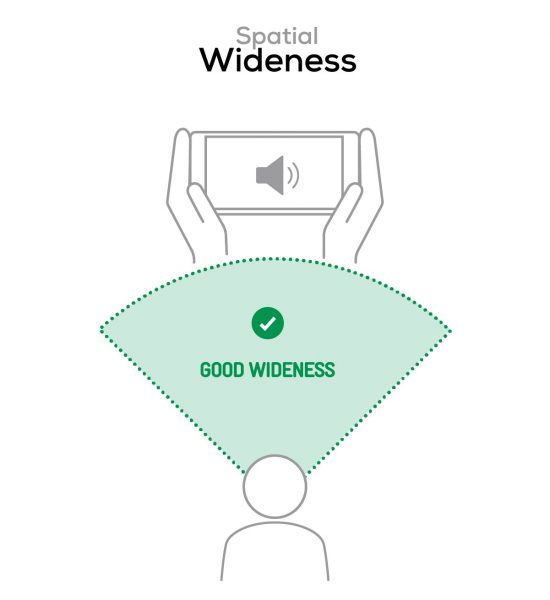
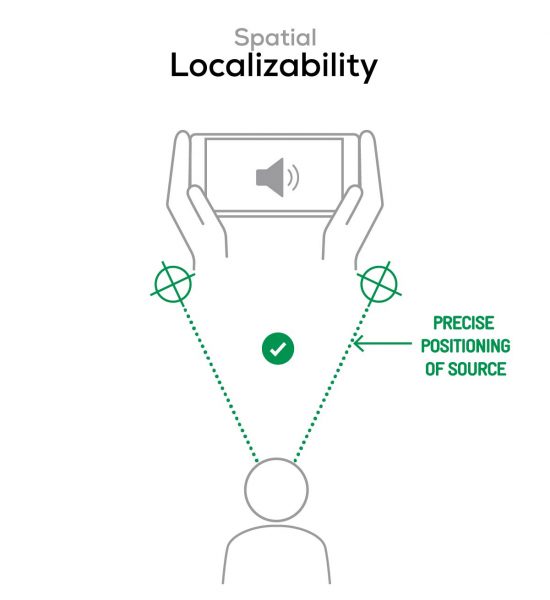
While left and right channels are well-balanced, they’re inverted in landscape mode (the left-firing speaker plays back the right channel, and vice versa) when using the Apple Music app, which substantially affects the spatial sub-score. Note that this inversion doesn’t occur when using other apps such as YouTube, Netflix, and Spotify.

Volume
Apple iPhone 12 Pro Max
71
91
Volume tests measure both the overall loudness a device is able to reproduce and how smoothly volume increases and decreases based on user input.
Overall, the iPhone 12 Pro Max puts in a solid performance in the volume sub-category, with a satisfactory maximum volume and consistent volume steps.
Minimum volume is well-tuned, thus allowing dynamic content (such as classical music or movies) to remain intelligible.
| Hip-Hop | Classical | |
| Oppo Find X2 Pro | 75.5 dBA | 74.9 dBA |
| Apple iPhone 12 | 75.4 dBA | 72.4 dBA |
| Apple iPhone 12 Pro Max | 72.5 dBA | 70.3 dBA |

Artifacts
Apple iPhone 12 Pro Max
84
113
Artifacts tests measure how much source audio is distorted when played back through a device’s speakers. Distortion can occur both because of sound processing in the device and because of the quality of the speakers.
The iPhone 12 Pro Max does an average job of controlling playback artifacts. Both noise and bass distortion are occasionally noticeable at nominal and maximum volumes.
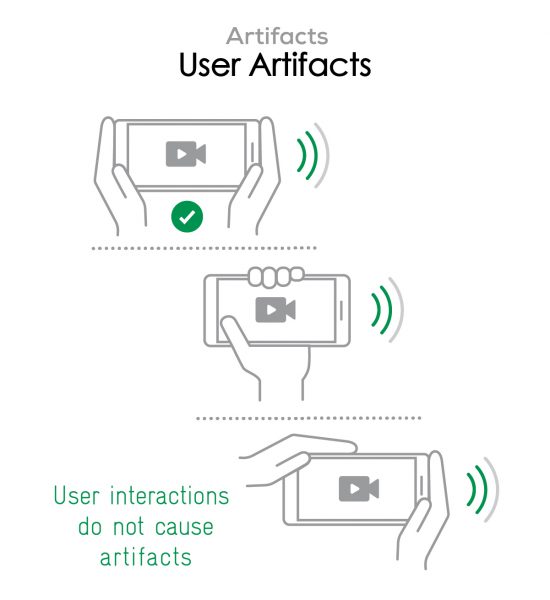
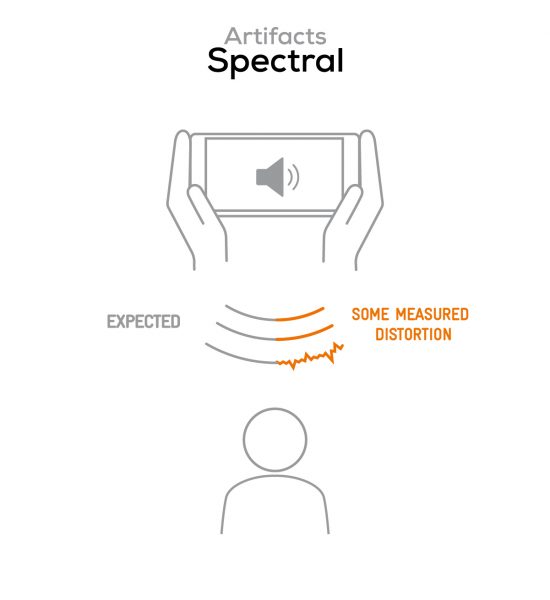
That all said, temporal artifacts remain discreet, and speakers are almost impossible to occlude when watching movies or while playing games.
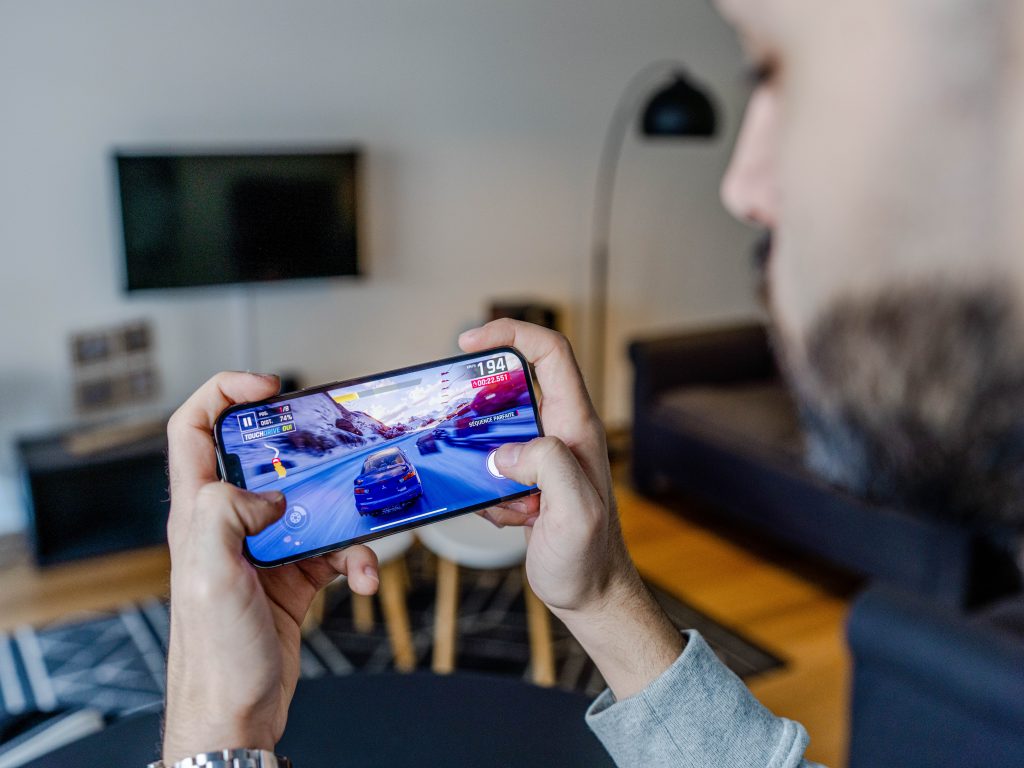
Recording

Timbre
Apple iPhone 12 Pro Max
82
91
The iPhone 12 Pro Max’s microphones deliver a very good timbre performance, particularly when recording in loud environments. Tonal balance is well tuned, with good bass definition and natural voices. Midrange is fairly consistent overall, but can occasionally sound a bit nasal.
Treble is slightly too bright compared to the iPhone 12, which induces a slightly more aggressive frequency response. Further up, high-end extension is somewhat lacking, which can affect the clarity of the mix.

Dynamics
Apple iPhone 12 Pro Max
74
81
Sounds recorded through the iPhone 12 Pro Max’s microphones exhibit a very well-preserved envelope, allowing good intelligibility for high-pitched voices. Low-end dynamics are fairly tight, which results in a more impactful punch than the iPhone 12 could offer.
When recording life videos, however, excessive brightness slightly impairs the signal-to-noise ratio (SNR). Further, when recording in loud environments, attack is somewhat affected by the lack of treble precision.

Spatial
Apple iPhone 12 Pro Max
64
78
Spatial attributes for recorded content are above average, with best results obtained in selfie videos: the sound field is wider than with most tested devices; distance rendering is realistic, thanks to the natural reproduction of midrange frequencies; and localizability of the sound sources is precise.
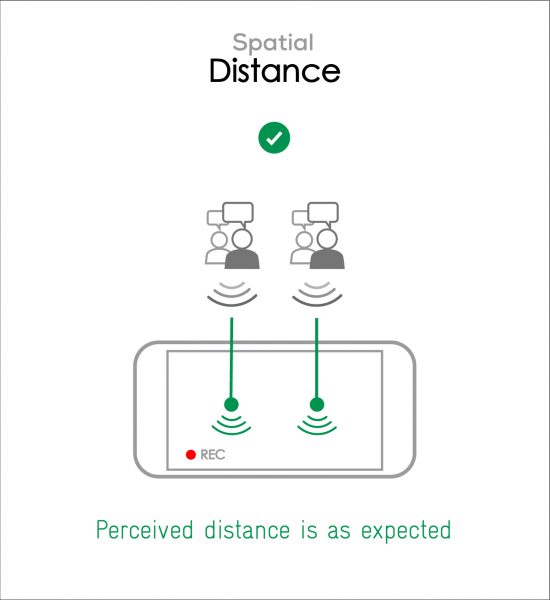
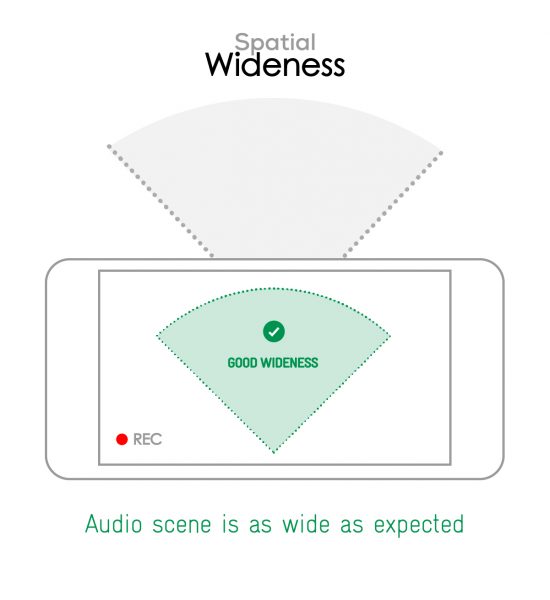
Videos recorded with the rear cameras also exhibit good distance and decent wideness. In this configuration, localizability is impaired by a high-pitched noise, which tends to drown out voices. Finally, distance is very accurate, but since meeting recordings are in mono, localizability is quite poor.

Volume
Apple iPhone 12 Pro Max
77
99
Among all smartphones we have tested to date, every iPhone that has gone through our Audio protocol provided the best maximum level reachable without noticeable spectral artifacts, and the iPhone 12 Pro Max is no exception. In other words, its microphones will endure a whole lot of decibels before generating distortion — and that’s quite a strong suit, especially for concert-recording aficionados!
[Recording-Volume-Max-Good illustration]While nominal loudness in general is fairly good, voice loudness is particularly pleasing. Here are our test results, measured in LUFS (Loudness Unit Full Scale); as a reference, we expect loudness levels to be above -24 LUFS for recorded content:
| Meeting | Life Video | Selfie Video | Memo | |
| Oppo Find X2 Pro | -26.7 LUFS | -19.5 LUFS | -16.9 LUFS | -20.8 LUFS |
| Apple iPhone 12 | -24.1 LUFS | -21.7 LUFS | -19.7 LUFS | -19.1 LUFS |
| Apple iPhone 12 Pro Max | -23.7 LUFS | -22.4 LUFS | -19.7 LUFS | -18.8 LUFS |

Artifacts
Apple iPhone 12 Pro Max
67
97
In this area, the iPhone 12 Pro Max is only average — even slightly below the iPhone 12. Despite occasional compression on electronic tracks, it performs best in high SPL environments and when recording memos.
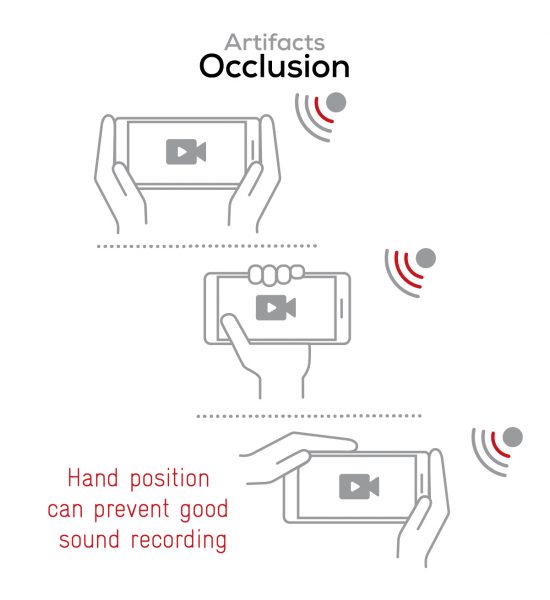
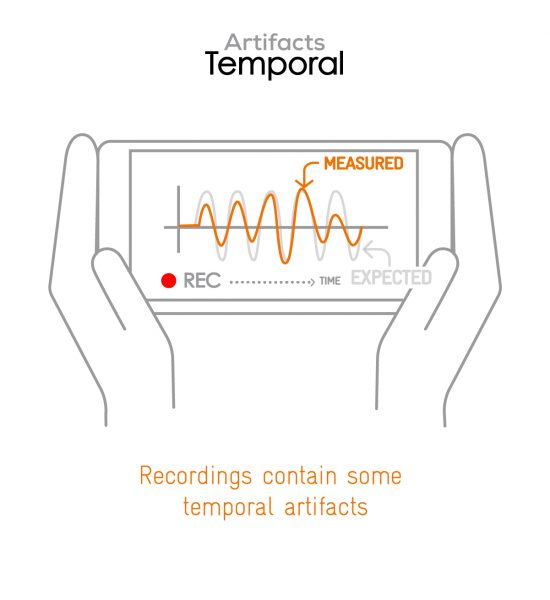
When filming selfie and life videos, aggressive pumping and slight distortions are noticeable on shouting voices, as well as hissing. And unlike in playback, microphones are easy to occlude.

Background
Apple iPhone 12 Pro Max
45
60
Due to the brighter overall tonal balance, background is too sibilant and therefore less natural than with the iPhone 12.
Conclusion
Due to low-end resonances and inverted channels in playback, along with easy-to-occlude microphones and emphasized brightness in recordings, the iPhone 12 Pro Max can’t entirely keep up with the best audio performers, namely the Xiaomi Mi 10 Pro and the Asus ROG Phone 3. That all said, Apple’s 2020 top-of-the-range device manages to achieve one of the highest scores of all phones we have tested to date.
Despite similar performances in several sub-categories, the iPhone 12 Pro Max is clearly a step up from the iPhone 12, thanks to deeper low-end extension in playback, slightly better dynamics in both playback and recording, and the best maximum reachable level in recording we’ve measured up to now. Additionally, its speakers are almost impossible to occlude, which makes it an excellent choice for smartphone gaming.
Playback
Pros
- Great timbre performance, with precise high-ends, good low-end extension, and a consistent tonal balance across all volumes
- Precise treble allows sharp attack, and great low-mids reinforce punch, even at soft volumes.
- Good wideness overall, great balance, and realistic distance rendering
Cons
- Bass response and precision are slightly impaired by occasional low-end resonances and slight distortions.
- Audio scene is inverted in landscape mode in the Apple Music app.
Recording
Pros
- Very good timbre performance
- Good dynamics performance thanks to sharp attack, good punch, and well-preserved sound envelope
- Good spatial attributes thanks to very good localizability, wideness, and distance
- Fairly good nominal loudness across all use cases
Cons
- Too bright and less-precise trebles make tonal balance more aggressive compared to iPhone 12.
- Decreased attack performance and less-natural background than on iPhone 12
- Microphones are easily occluded.
- Harsh pumping and slight distortions impair artifacts performance in loud contents.


DXOMARK encourages its readers to share comments on the articles. To read or post comments, Disqus cookies are required. Change your Cookies Preferences and read more about our Comment Policy.